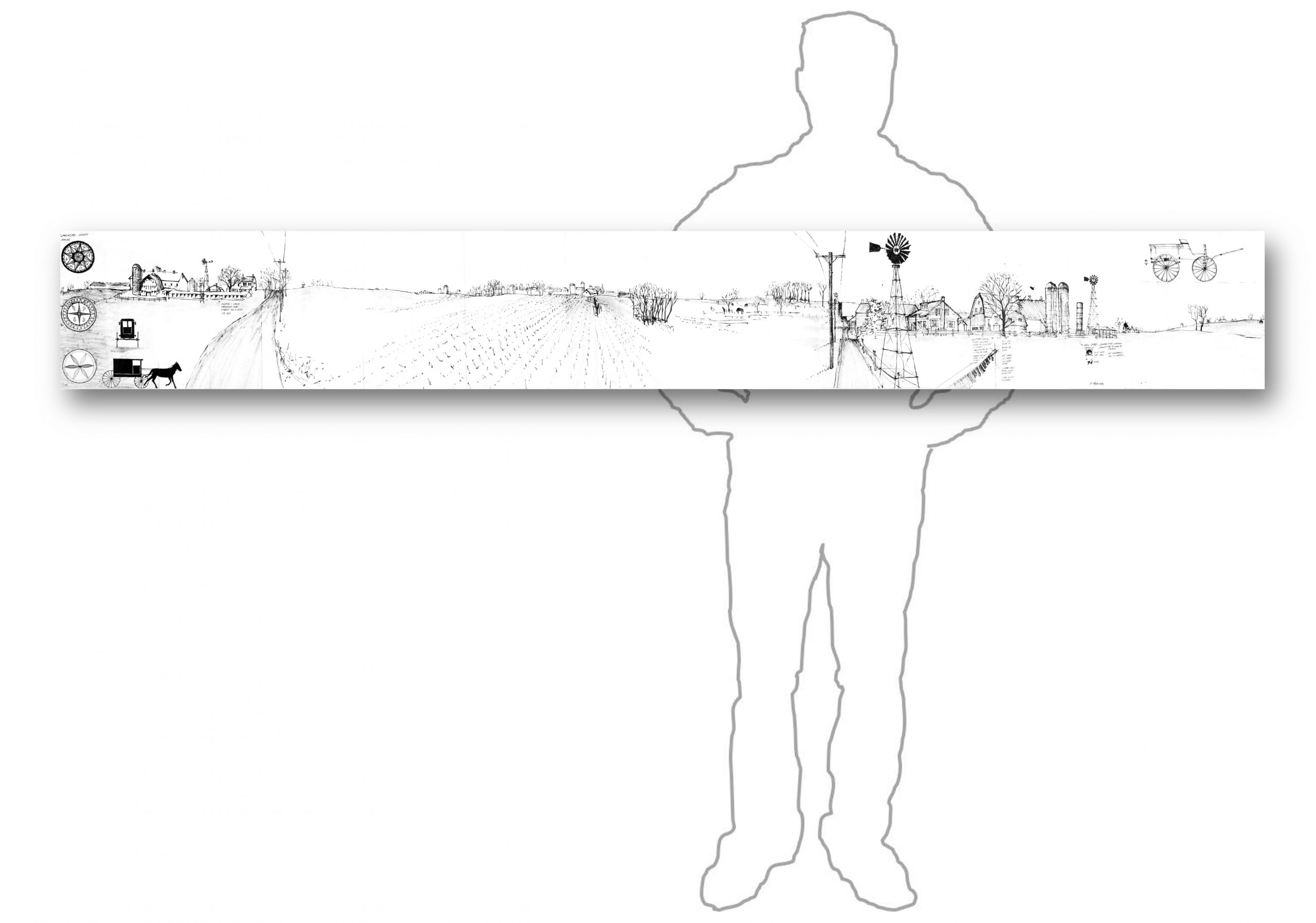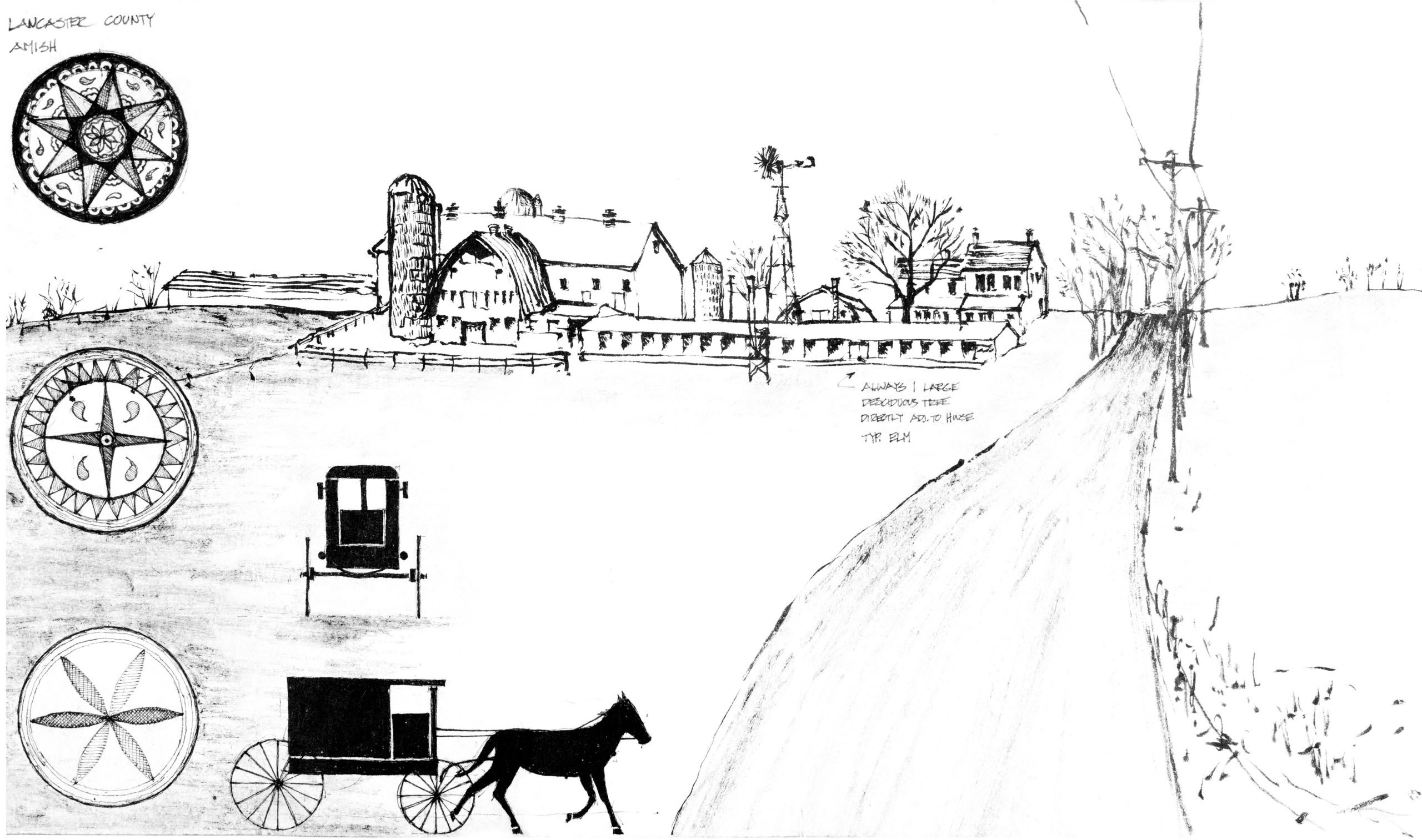7.23.USA-6-detail-b Highlights Relevant to Sustainable Design:
Problem solving through friction reduction.
Friction is the resistance that one surface or object encounters when moving over another. The example of the strap hinge reduces friction by holding the heavy barn door from rubbing along the ground as the farmer opens and closes it. The example of the fence stair and the drains reduces friction at a human energy level by creating efficiencies of motion. Friction reduction is key from farm to business life, and these types of examples demonstrate intelligent approaches to problem solving.
The long strap hinge, about six feet across, is made from wrought iron to support a barn door. I was able to draw it at full scale, given the advantage of the foldout sketchbook structure. In this drawing, the small plan and cross-section drawing of a set of “stairs” in USA 6: Detail (d) illustrates a clever way to get up and over a fence. Rather than building traditional parallel tread and risers on the stairs, this farmer designed and built a stair with as little effort and material as possible. You step once, again, and then cross over, all the more easily than trying to climb over or under a fence.
7.25.USA-6-detail-d stair over fence detail from the drawing that includes the strap hinge

The drains on the side of a building stick out in odd locations. The story behind the odd façade is that the building is a cloister in Ephrata, Pennsylvania. The residents would regularly clean the floors by washing them down. The dirty water would run to the edge of the room, and then they would push it right out through the wall via the gutter spout. This may have kept them all a little bit more cheerful, because they didn’t have to bend over to pick up heavy buckets. The Ephrata Cloister[i] is one of America’s earliest religious communities, founded in 1732 by German settlers who placed spirituality over material rewards. This national historic landmark is now administered by the Pennsylvania Historical and Museum Commission.
7.24.USA-6-detail-c Ephreta Cloister from the drawing that includes the strap hinge

Beyond friction reduction, the three panel details in the upper left of (b) are from different periods in American history. Restoration architects can study the panel details to identify work from a specific period of time.
Author and illustrator: Charlie Szoradi is an architect, inventor, and the CEO of Independence LED Lighting. He writes about many other topics related to strap hinge design through his extensive travels around the world.
If you have found this posting online, it is an excerpt from Mr. Szoradi’s book Learn from Looking that served as the inspiring seed content for this drawing share resource. For additional drawings and insights on strap hinge integration, we hope that you enjoy exploring LearnfromLooking.com. You can search via general terms such as sustainability as well as narrower terms such as strap hinge, fence, and wooden panels details.
[i] Ephrata Cloister: USA 6: Detail (b) and (c):
http://www.ephratacloister.org/history.htm.



